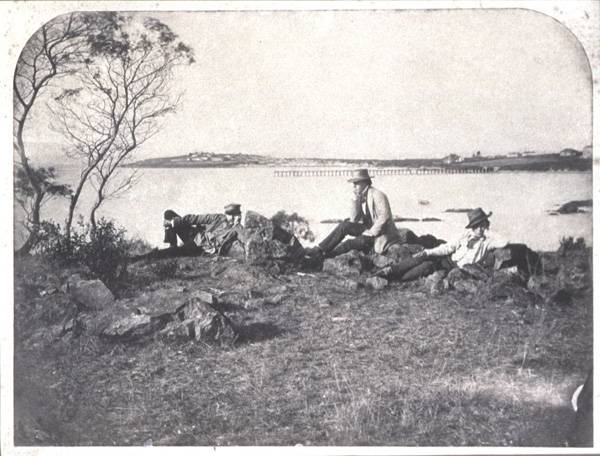 |
 |
|
Surveyors
Surveyors were vital in Tasmania's early British settlements, to set out roads, bridges and buildings, and explore outlying areas of settlement, to find arable land and survey grants. In 1804 James Meehan surveyed the area around Risdon from the upper Derwent Valley to Pitt Water, and from that year George Harris surveyed the area around Hobart. Because Port Dalrymple was settled almost simultaneously with Hobart, Harris was required to divide the island at the 42nd parallel into two administrative areas, Cornwall in the north and Buckinghamshire in the south. These locality names still exist, and north-south rivalry continues. In 1812 Van Diemen's Land was united, and a Survey Department was created under Deputy-Surveyor George Evans, though there was controversy about his misuse of discretionary powers when surveying land grants. In 1825 Edward Dumaresq became Chief Commissioner for Lands and Surveyor-General, and the orderly granting, survey and sale of crown lands was put into place. In 1827 George Frankland was appointed Surveyor-General, and the first systematic exploration of the island commenced. Well-known surveyors included Henry Hellyer of the Van Diemen's Land Company, and James Sprent, assistant government surveyor, who completed a map of Tasmania in 1859. The expansion of the mining industry from the 1870s created the need for additional surveyors, as did the expansion of forestry in the early 1900s. By this date the surveying fraternity had evolved into two distinct groups, government and private surveyors. A Survey Institute was formed in 1892, and in 1894 the Institute of Surveyors Tasmania was incorporated, both government and private surveyors being members. Until the 1930s, surveying in Tasmania consisted of Cadastral, Engineering, Topographic and Geodetic Surveys, the extent and accuracy being very much dependent on the instrumentation of the day – the theodolite, the level, staff and chain. Surveying and mapping of large tracts of land was limited by the mountainous nature of Tasmania. After the Second World War, the need for mapping Australia saw a National Mapping Council formed. This Council, and the development of industries such as the Snowy Mountains Scheme, provided tremendous impetus to surveying and mapping. In Tasmania the Public Works Department, Forestry Commission, Hydro-Electric Commission and Lands Department expanded substantially. In particular the hydro-electric industry provided the finance and impetus for the Hydro-Electric Commission to introduce leading world technologies into all facets of surveying. These included large-scale aerial and terrestrial photogrammetry (1957), automatic levels (1957), long-range electronic distance measuring (1957), short-range electronic distance measuring (1968), laser alignment (1968), high precision distance meters (1974), Global Positioning Systems (1981), Geographic Information Systems, and Computer Modelling (1990). Other surveying organisations benefited. Geodetic survey of Tasmania has been enhanced by surveyors from the Lands Department, and the 1:25000 series of maps of Tasmania has been a highlight. Improving technology continued to revolutionise surveying, particularly in the last twenty years, in some cases cutting times from years to days. Government surveying organisations tended to dominate the survey industry from the early 1950s until the mid-1980s, but by 1990 many had been dismantled, and survey requirements were sought from the private sector. Most government survey organisations now carry out an administrative role and the profession is multi-disciplinary, far removed from the exploring and simple measuring of colonial times. Further reading: A Jones, Backsight, Hobart, 1989. John Linton |
Copyright 2006, Centre for Tasmanian Historical Studies |
